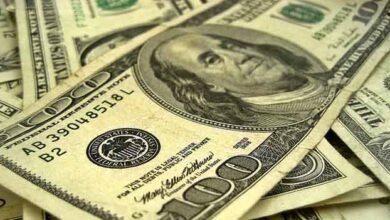Rate-cut delays could mean dollar stays stronger for longer

Further signs of a solid U.S. economy and potential delays to anticipated interest-rate cuts could prolong the dollar’s strength, analysts said.
Further signs of a solid U.S. economy and potential delays to anticipated interest-rate cuts could prolong the dollar’s strength, analysts said.
Many analysts and fund managers have been anticipating that the dollar would fall this year as the Federal Reserve starts to cut interest rates, but rate-cut expectations have been trimmed back sharply recently while U.S. elections and geopolitical uncertainty could also lift the currency.
Premium benefits
35+ Premium articles every day
Specially curated Newsletters every day
Access to 15+ Print edition articles every day
Subscriber only webinar by specialist journalists
E Paper, Archives, select The Wall Street Journal & The Economist articles
Access to Subscriber only specials : Infographics I Podcasts
Unlock 35+ well researched
premium articles every day
Access to global insights with
100+ exclusive articles from
international publications
Get complimentary access to
3+ investment based apps
TRENDLYNE
Get One Month GuruQ plan at Rs 1
FINOLOGY
Free finology subscription for 1 month.
SMALLCASE
20% off on all smallcases
5+ subscriber only newsletters
specially curated by the experts
Free access to e-paper and
WhatsApp updates
Many analysts and fund managers have been anticipating that the dollar would fall this year as the Federal Reserve starts to cut interest rates, but rate-cut expectations have been trimmed back sharply recently while U.S. elections and geopolitical uncertainty could also lift the currency.
“Doubts are spreading as to the ability of the Fed to cut rates at its June FOMC meeting,” Jane Foley, head of FX strategy at Rabobank, said in a note.
“This, combined with political risks, suggests the prospect of a stronger-for-longer dollar.”
Money markets show expectations of U.S. interest-rate cuts have been slashed to just 62 basis points this year from around 150 basis points at the beginning of the year, according to Refinitiv, as data continue to point to robust economic growth and stubborn inflation. This has kept Treasury yields elevated and supported the dollar.
Pimco favors the dollar over the euro and other European currencies such as the Swiss franc and the Swedish krona in anticipation of further evidence of the U.S. economy performing better than others, economist Tiffany Wilding and Andrew Balls, chief investment officer for global fixed income, said.
Jonathan Petersen, senior markets economist at Capital Economics cited a risk that U.S. economic growth and inflation could stay strong rather than soften as expected, forcing the Fed to keep rates high while other central banks reduce rates.
“This would be enough to push interest rate differentials (and the dollar) back towards levels last seen in late 2022,” he told Dow Jones Newswires.
“Our sense is that the tailwinds that have supported the dollar so far this year, notably the favourable shift in interest rate differentials, will gradually turn to headwinds.”
Capital Economics expects the DXY dollar index—which measures the dollar’s value against a trade-weighted basket of currencies—to decline to 98.34 by the end of 2024 and to 97.84 by the end of 2025.
The DXY index is last at 104.290, having hit a 20-week high of 105.100 on April 2.
Natixis Research forecasts a smaller fall in the DXY index, to 102.300 in six months and gradually declining to just below 100.000 in 15 months’ time.
Natixis forecasts 100 basis points of U.S. interest-rate cuts this year, below their previous estimate of 150bps. This is well above the 62 basis-point reduction currently priced by U.S. money markets, with a first cut almost fully priced in for July, according to Refinitiv, and above the Fed’s current forecast of 75 basis points.
“This will weaken the dollar, but less than initially expected, especially in the second half of the year,” FX strategist Nordine Naam and the economic research team of the French bank said in a note.
Saxo’s head of FX strategy Charu Chanana expects that the better performance of the U.S. economy versus its peers will start to fade and weigh on the dollar.
“U.S. economic data has been strong in the first quarter, but signs of weakness are emerging, potentially marking a turning point for the U.S. economy,” she said.
Saxo expects that a ‘soft landing’ for the U.S. economy, where inflation slows without causing a steep economic slowdown or recession, could bring with it a weaker dollar and it may be prudent to reassess long dollar positions.
This is based on the ‘dollar smile’ theory, where the dollar strengthens in periods of either economic prosperity or economic uncertainty, but weakens during periods of moderate growth.
However, there are concerns about how long dollar weakness will last.
“New risks loom on the horizon,” she said.
A Trump election victory “could potentially lead to a strengthening of the dollar due to tariff risks and safe haven flows,” she said.
Source link





